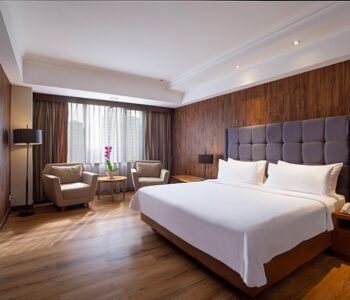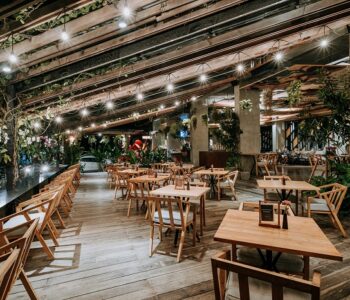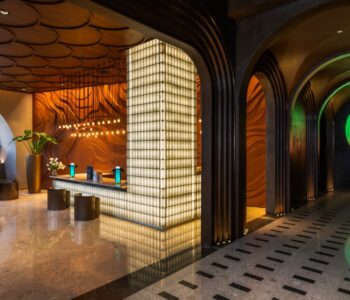
It was a long journey for Indonesia to declare its independence from colonial rule on 17 August 1945, when the Proclamation of Independence was read by Soekarno and Mohammad Hatta on behalf of the Indonesian people. That moment was a clear mark that the nation of Indonesia was established and indeed sovereign. Commemorating this historic occasion, NOW! Jakarta takes you to the historical sites of Indonesia’s independence day that stand proudly in the city to this day.
“Dirgahayu Indonesia!”, an exclamation commonly heard throughout August to mark Indonesia’s birthday. Dirgahayu translates more as ‘long live’, and not ‘happy birthday’, like many Indonesians still believe, and is therefore seen more as a statement or indeed pronouncement for a lasting nation state. This year, 2024, Indonesia celebrates its 79th anniversary and, if all remains on schedule, it may be the first time that it is not celebrated only in Jakarta, but simultaneously in the new capital of Ibu Kota Nusantara (IKN), East Kalimantan.
For almost 80 years people have gathered at the State Palace in Jakarta for the Independence Day flag raising ceremony. And whilst future ceremonies may take place at IKN, there is no denying Jakarta’s significance as the centre of Indonesia’s independence history, seen through the monuments and sites that still stand in the city today.

Those of you who want to trace the history of Indonesian independence, you can start from the Kemayoran area. The history of the proclamation of Indonesia’s independence was preceded by a series of important events, one of them was when Soekarno, Mohammad Hatta, and Radjiman Wedyodiningrat were flown to Dalat, Vietnam from Kemayoran Airport to “pick up” the independence promised by Japan. This thrilling mission to Vietnam began on 8 August 1945 just before midnight. The flight to Dalat was deliberately carried out in secret because of the urgency of the situation. The three national figures rested in Saigon (now called Ho Chi Minh), before continuing the flight. On 11 August, the journey continued to Dalat and arrived on the same day. Soekarno, Hatta, and Radjiman and their entourage had to wait until the next day for their scheduled meeting with Marshal Hisaichi Terauchi, Commander of the Japanese Armed Forces for Southeast Asia.
In that meeting Terauchi’s impression was convincing and it seemed that he really would give independence to Indonesia on 24 August. On 14 August, these three figures returned to Indonesia and a series of polemics arose. At Kemayoran Airport, the return of those national figures was greeted by a group of youth movements pushing for the proclamation of Indonesia after knowing Japan had lost in World War II due to the United States detonating two atomic bombs over the Japanese cities of Hiroshima (6 August) and Nagasaki (9 August).
“If I previously said that Indonesia would be independent after the corn bore fruit, now it can be said that Indonesia will be independent before the corn flowered,” said Soekarno shortly after landing at the Kemayoran airport in front of a group of youth, which was recounted by Mohammad Hatta in his autobiography Untuk Negeriku, Menuju Gerbang Kemerdekaan (For My Country, Towards the Gate of Independence).
The airport officially ceased operations on 31 March 1985 with the start of the transfer of flight activities to Soekarno-Hatta International Airport. The former Kemayoran Airport is now the location for the Jakarta Fair event which is held every year for Jakarta’s birthday every 22 June.
The demand to immediately proclaim itself as an independent country continued to be made by youth groups. Sutan Sjahrir was one of the first figures to push for the proclamation of Indonesian independence without waiting for Japan’s promise. He considered the Japanese promise to be just a trick by the colonisers while Soekarno and Hatta still wanted to see the truth of the news that Japan had surrendered to the allies and brought it together with the Preparatory Committee for Indonesian Independence (PPKI). The attitude of Soekarno-Hatta was opposed by the youth group. They considered the PPKI to be a body created by Japan.
On 15 August, the youth groups also held a meeting at the Bacteriology Institute in Pegangsaan Timur No. 17, precisely in front of Cikini train station, now part of Universitas Indonesia’s Faculty of Medicine. Today the site is just a building that will be turned into a museum in the future. Led by Chairul Saleh, they agreed that Indonesian independence was the right and matter of the Indonesian people themselves, not dependent on other people and kingdoms. And they urged Soekarno to immediately declare the proclamation on 16 August. If not, there will be bloodshed. Hearing the statement, Soekarno was angry and said, “This is my neck, drag me to the corner and end my life, don’t wait for tomorrow. I cannot release my responsibility as the Chairman of the PPKI. Therefore, I will ask the representatives of the PPKI tomorrow.”
The incident was witnessed by nationalist figures such as Hatta and Achmad Soebardjo. They emphasised the importance of holding a PPKI meeting first. Negotiations between the young and elder groups did not reach a meeting point. The youth representatives then went home to report and then prepare for the next meeting.
At exactly 4.30 am on 16 August, Soekarno, Fatmawati and their eldest son, Guntur, and Hatta were kidnapped to Rengasdengklok, Karawang by the youth and were placed in the house of a resident of Chinese descent named Jiauw Ki Song. The act of “kidnapping” was originally intended to pressure Soekarno and Hatta to be willing to immediately proclaim independence.
In Jakarta, Achmad Soebardjo, who was a prominent figure from the elder leaders, learned of the incident. He then met Wikana, one of the youth leaders. Talks were held and it was agreed that independence should be declared in Jakarta immediately. Achmad Soebardjo along with Sudiro and Jusuf Kunto headed to Rengasdengklok to pick up Soekarno and Hatta and bring them back to Jakarta.

On the same day, in the evening, discussions were held regarding the plan to implement the declaration of independence. A Japanese officer who supported Indonesian independence, Rear Admiral Maeda, willingly provided his residence as a place for composing the text of the proclamation by Seokarno, Hatta, and Achmad Soebardjo. His former house now becomes the birthplace of the proclamation text of Indonesia Independence, which is famous as Museum Perumusan Naskah Proklamasi (Formulation of Proclamation Text Museum) on Jalan Imam Bonjol No. 1, Menteng.
The contents of the proclamation was written by Soekarno himself and after drafting, all parties present had to agree to what had been written. At that time, figures present were journalist B.M. Diah, Sayuti Melik, Sukarni, and Soediro. Sukarni suggested that Soekarno and Hatta signed the text of proclamation on behalf of the Indonesian people, meanwhile the text was typed by Sayuti Melik. It was the manuscript that later became the authentic text of the proclamation of independence.
On Friday, 17 August 1945 at 10am, Soekarno began to read the text of the proclamation of independence and followed by a short speech without text in front of several of the nation’s figures, community leaders and about a thousand people. After proclaiming independence, the red and white flag sewn by Fatmawati was raised, which became the beginning of a new life for the Indonesian nation with the strength of youth who played an important role in Indonesian independence. This place was Soekarno’s house at Jalan Pegangsaan Timur no 56. Now, the road’s name was changed to Jalan Proklamasi No. 10 and the historic house itself has been torn down, but the symbolic building remains at that point as Tugu Proklamasi (Proclamation Monument). At the location also stands the Tugu Petir, the Soekarno-Hatta Statue, and the Tugu Wanita.

The text of the proclamation was then announced throughout the country and even across the globe by the ANTARA Graha Bhakti Museum located at Jalan Antara No. 61, Pasar Baru. This cultural heritage building has just been inaugurated as the Antara Heritage Center, a destination for visitors to get knowledge about the history of Indonesia’s struggle for independence from the journalistic side. This year, the building managed by LKBN Antara and includes the Antara Photojournalism Gallery, turns 107 years old.
To complete this historic journey, when one is around the Menteng and Cikini areas, you can also still see the houses of the proclamation figures, such as the house of Mohammad Hatta or known as Rumah Bung Hatta, located on Jalan Diponegoro No. 57 and the house of Achmad Soebardjo located on Jalan Cikini Raya No. 80. After Soekarno and Hatta proclaimed the independence of the Republic of Indonesia, Soebardjo was appointed as Minister of Foreign Affairs on 19 August 1945. Soebardjo had to face very limited conditions in carrying out his duties, because he did not have an office, employees and office equipment. Soebardjo started the job empty-handed. He turned his private house in the Cikini area into the first office of the Ministry of Foreign Affairs and recruited 10 people as his employees.





